
Basic consumables
Another misconception of people who have recently encountered working with a chainsaw is “the saw does not saw”. Such comments are very often found in reviews of various models of gas tools.
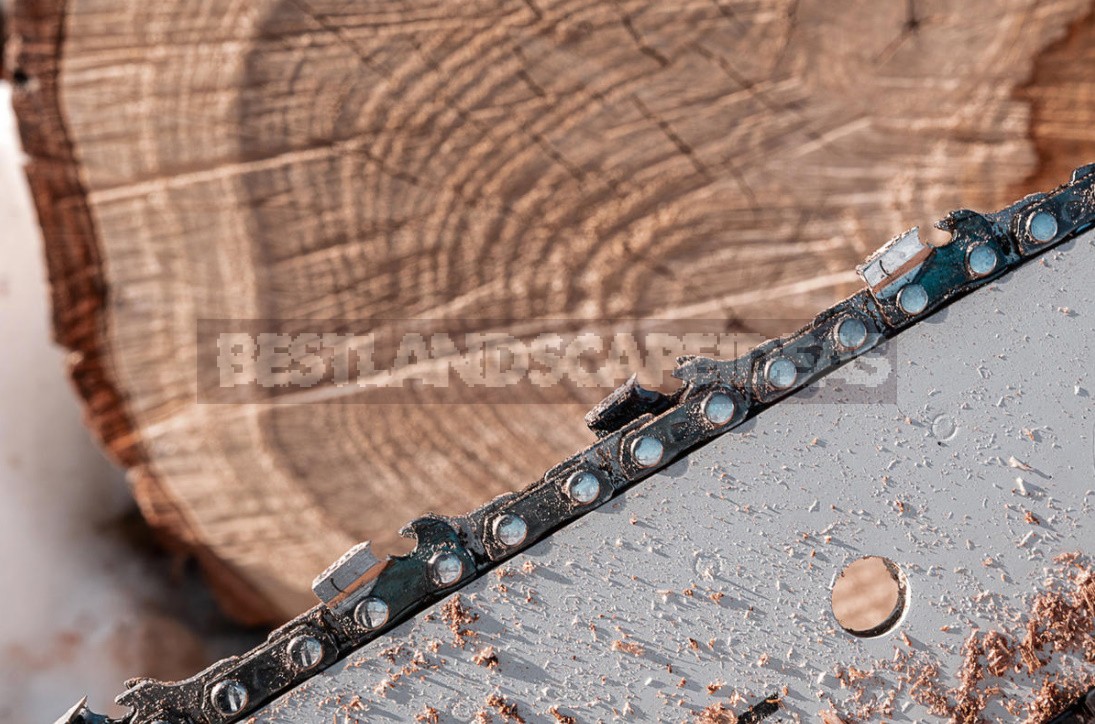
Saws not a saw, but a chain
If you have chosen the right cutting headset, but are still dissatisfied with the result, most likely, the chain has lost its cutting qualities. Engine power and number of revolutions, of course, are important, but if the cutting part-the chain-is blunted, even a powerful Pro saw stops sawing. Need sharpening.
There is no exact time frame for sharpening — it all depends on the frequency of use, the hardness of the wood, the type of work and the skill of the operator. How to know that it’s time to update your chain:
- you felt a decrease in the speed of sawing,
- you have to put a lot of effort into your work,
- the tire goes sideways when sawing,
- the type of chips changed. When the chain is sharp, the chips have a uniform square shape. When it is blunted, the chips take a needle-like shape — and there is a lot of small, dusty.
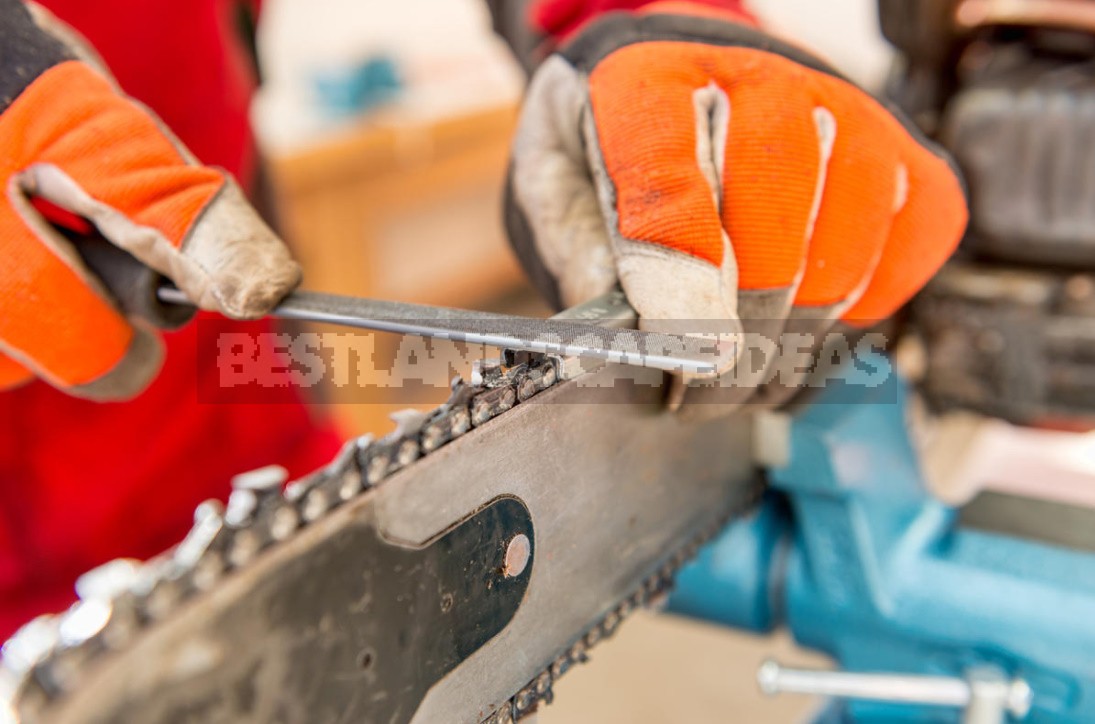
You can sharpen the chain yourself — or give it to the workshop. Sharpen the incisors manually-just a file, an angle grinder. But it is more efficient to sharpen the chain on a special machine, because it is difficult to achieve the perfect geometry of the cutting elements manually. And an incorrect sharpening angle can further degrade the cutting properties.
Experts advise you to have several ready — to-work chains-even with the same technical characteristics, so as not to get into the situation “you need to saw, and the chain is blunted”.

In addition to the loss of sharpness, saw chains tend to stretch from work. The tire mount allows you to tighten the chain to some extent. But when you notice that the tensioner can not provide the required tension, it means that the chain has run out of life and must be replaced. It is worth replacing the chain in case of damage to the links.

Guide bus resource
The guide rail is also the main consumable and requires periodic replacement. If you bought a good one, its resource is about three resources of a high-quality chain. Accelerate tire wear improper operation and maintenance:
- excessive chain tension (to check, pull the chain in the middle of the tire. The chain shank should come out of the groove at about 2/3 of its height),
- mismatch of the chain thickness to the tire groove or chain pitch to the crown of the drive sprocket,
- you make excessive effort when sawing, press on the saw,
- poor lubrication due to incorrect operation of the oil pump,
- use of low-quality chain oils.
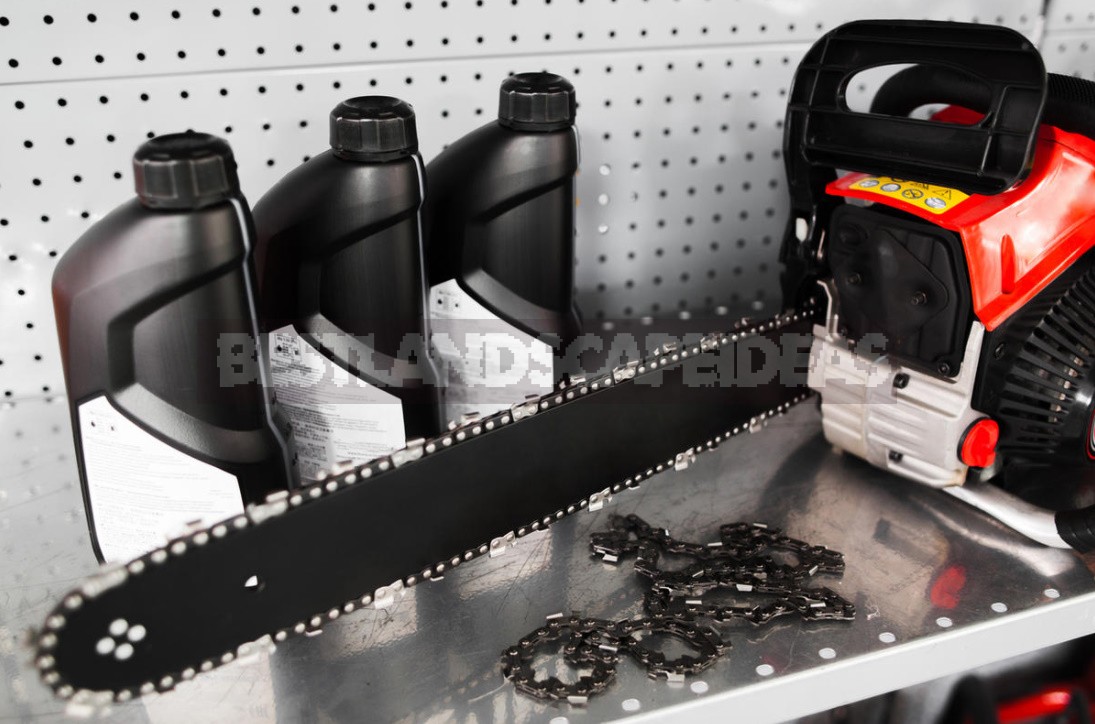
Chain oil
The last point should not be left without explanation. The oil intended for the chain and sprocket must provide high-quality lubrication, good protection even in very harsh operating conditions, and allow the tool to work effectively in different temperature conditions. This includes mineral transmission oil for chainsaws Bio Sage-Kettenoil from the German brand Liqui Moly. This composition can be used both in the warm season and in winter at temperatures up to-30ºC. It is very important that the product is biodegradable and non-toxic: it is a concern not only for your health, but also for protecting nature from pollution.
It is noteworthy that this oil has the highest score and certificate of the German forestry Commission, and it is allowed to be used for tools used in nature reserves in Germany. Such a certificate is extremely difficult to obtain even for German manufacturers.
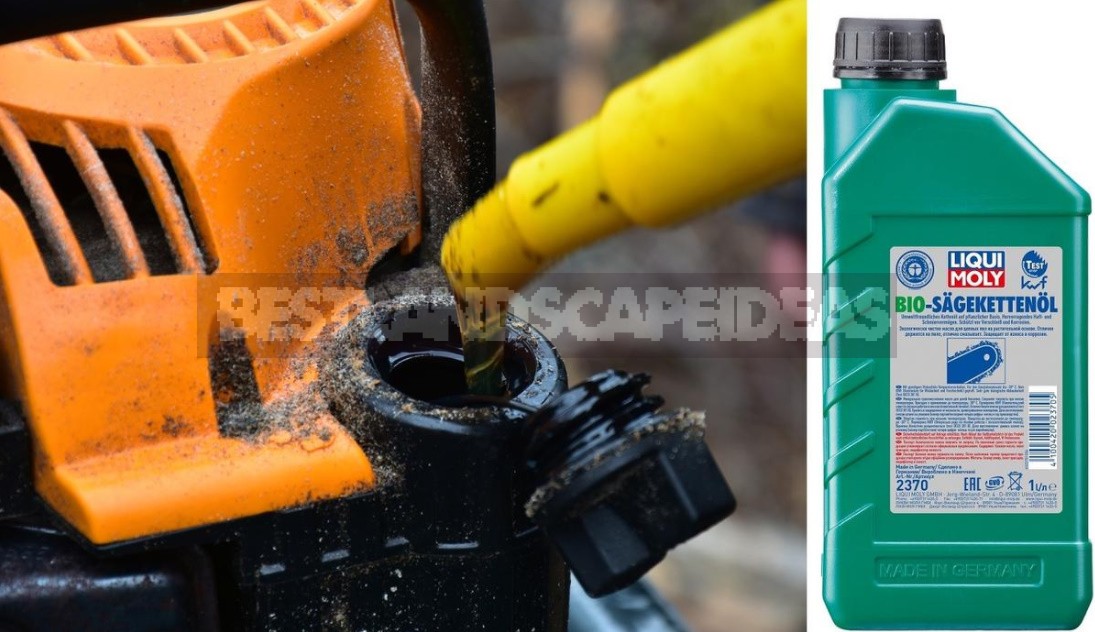
Users often try to save money by purchasing products of unknown quality. For the owner of a chainsaw, such savings can go sideways: poor — quality oil-motor or chain-can lead to tool failure. Manufacturers of chainsaws of well-known brands often produce their own oil in addition to tools and consumables. And if another one was used, the service center may refuse to provide warranty repairs. If the instructions do not contain recommendations on this issue, then you should give preference to manufacturers who rightfully enjoy the glory of a high-quality brand that you can trust.
Engine oil
Chainsaws are equipped with two-stroke internal combustion engines. As a rule, the fuel tank of such engines is filled with a gasoline-oil mixture. Therefore, the importance of using high-quality fuel and oil is obvious. The engine oil must burn completely, without forming carbon deposits on the inner surface of the cylinder and piston, and at the same time provide reliable lubrication of moving parts, preserving them from wear in severe operating conditions and creating anti-corrosion protection.
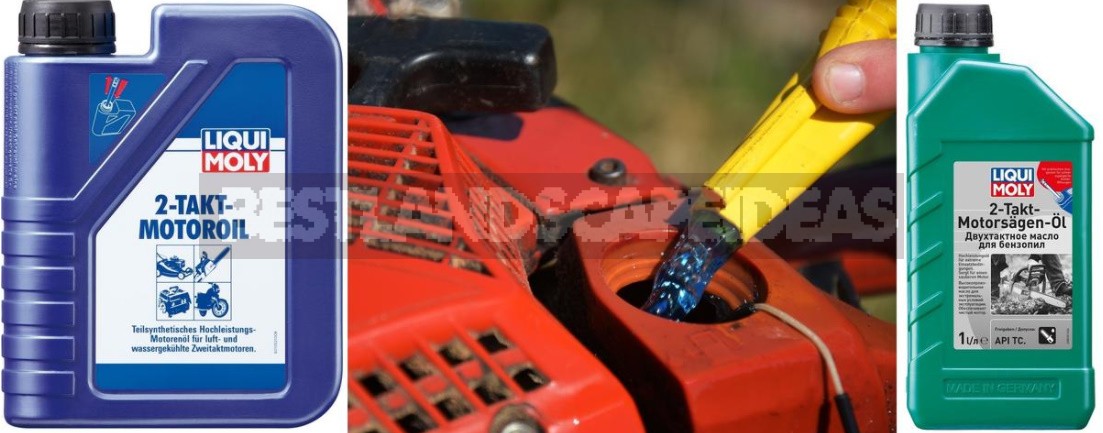
When selecting engine oil, it is very important to take into account the peculiarities of seasonal work, because this tool is used in the cold season. And at a low temperature, the viscosity of the oil increases — not every oil is suitable. The special garden program Liqui Moly has all-season oils for two-stroke engines (semi-synthetic and mineral), which will ensure reliable operation of the engine even at low temperatures. They comply with European (read — the most stringent) environmental standards.
Any of these oils are mixed with gasoline in a ratio of 1: 50 (in simple translation — 1 liter of fuel requires only 20 g of oil). When preparing the mixture, it is important to observe the exact proportions. If you save money and do not pour enough oil, the engine parts will overheat faster. If you regularly add extra fuel, the engine will clog up with combustion products. The result in both cases is the same — faster engine wear.

This should become a habit
In addition to all this, do not forget about regular maintenance of your chainsaw. After intensive work, it is a good idea to wipe the guide tire from the resin. Periodically clean the guide groove from the stuck resin. Check the muffler, clean the spark plug from carbon — it is better to replace a badly worn one.
During operation, pay attention to the chain lubrication, because you can not allow sawing when the oil tank is empty or the oil channel is clogged. If you have a long sawing process, you can lower the chain into the oil for a few minutes before starting, so that it is immediately lubricated completely to the smallest detail.

If you know that you will not use a chainsaw for a long time, then wrap the chain and tire in a cloth soaked in oil.
And always remember: the more attention we pay to technology, the longer it will last. No matter how simple the device may seem at first glance, there are requirements and recommendations for its maintenance. Proper operation, choice of engine and chain oil and other mandatory conditions are the key to long and efficient operation of the chainsaw.

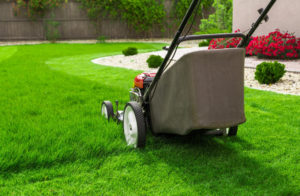


Leave a Reply